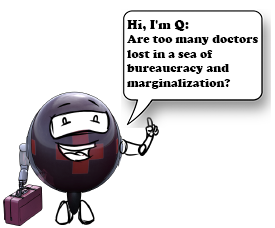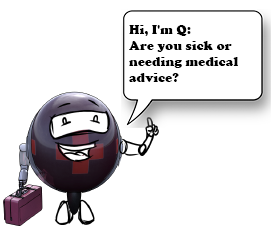Press
Introduction:
The field of medical informatics can be traced back to the late 1960s when automated instruments (SMA12 Technicon Sequential Multiple Analyzer 12 Channel) and laboratory systems started to populate hospital clinical labs. These were based on small minicomputers that used machine language and basic programming. These early systems performed small tasks like peak finding and report generation. Fast forward over fifty years to our modern day EMRs (electronic medical records) running thousands of hospitals and clinics across the country. This digital transformation has been fueled by billions-of-dollars of government funding and produced a few giant billion-dollar corporations that now control the medical informatics market. What have all these funds and all this technology accomplished and are we better now than we were back then?
Discussion:
A watershed article was recently published that takes a serious critical review of the American EMR experiment. This article appears in the 2019, April edition of Fortune magazine. The title is; “Botched Operation”. The authors Erika Fry and Fred Schulte took a serious look at this massive change in our healthcare delivery system and have some very powerful comments to deliver. I encourage anyone who has an interest in this field to read the whole article because it has truth that others do not want you to hear.
My job in this short editorial is to highlight the conclusions of their study and try to offer ideas about a next step to fix the problems they uncovered.
1. Government approved EMRs are being sold and used that were never adequately tested or validated before use. Law suits have proven system errors and malfunctions that cause serious human suffering and death. Our tax dollars (in-the-billions) paid for these systems. Over 90% of American hospitals and clinics now use these government “approved” systems. The VA is the next huge system to step into this EMR mix and they will have no better results that what already has happened.
2. Our $3.7 trillion-dollar healthcare system is now totally controlled by these EMRs. The government has recently invested $36 billion dollars into EMRs and there is now great concern over the value of this tremendous leap of faith. We have a healthcare system that is now enslaved to these EMR vendors with little control over their behavior or what physician’s need and want. The hospitals are locked into these systems since their entire accounting system is run through their EMR software. This makes it very difficult to change vendors.
3. These new systems have not reduced costs but have automated upcoding to increase hospital and clinic revenue. These additional costs are covered by the government and insurance carriers. That means that the consumer pays more in taxes and premiums.
4. These EMRs are consuming an inordinate amount of physician and staff time in documenting and clicking their way to an automated bill. These EMRs are optimized for billing and not for patient care.
5. These EMR companies and the government have secrecy clauses in their contracts that limit the ability of hospitals and doctors to point our errors and problems with these systems. A “shield of silence” is protecting these systems.
6. These EMRs don’t share data and the health records of patients are not available to the average patient. You get lab data and that is usually it. These systems are all designed differently and can’t communicate with each other. This was the result of a rush by the government to spend the money before prototype testing and validation.
7. The average outpatient encounter time is now about 10 minutes and a majority of that time is spent on the EMR clicking thru the hoops of government mandated screens. The goal is to bill for the highest amount possible “under the law”. The average ER doctor will need to do 4000 mouse clicks during his shift to complete his medical records. Even then he may not be finished with his EMR clerical duties.
8. These new EMRs are not smart but lack detailed medical knowledge and diagnostic tools. They allow free text to be used or pasted (80%) into the charts to expedite charting. There are no internal prompts to oversee the diagnosis, proper use of tests, and medications. There is no standardization of terminology or symptom reporting. In contrast, the pharmacy portion of these EMRs is totally under the control of a massive pharmaceutical database that stores dosages, delivery, and formulations. The medical part of these EMRs is without this critical database of essential medical knowledge and it will never be consistent or connective without it because there is no standardization.
9. The safety claims against these new EMRs is growing exponentially. There were almost 4000 patient safety cases reported in 2018 and this was said to be very underreported. The government doesn’t even mandate reporting of these EMR patient safety cases.
10. The human interface to these EMRs is also a serious problem. There is now too much data and the screens are not optimized for critical thinking. Errors can be made by long lists and clicking the wrong box. There is no auditing that is being done by the software to detect these mistakes and correct them. These systems also do not allow outside input from a cell phone or external digital device. The whole realm of graphics is now limited to a closed EMR that makes the physician seem powerless.
11. Physician and medical staff burnout is at an all time high. Recent studies have been published on this area and it points to the total dissatisfaction of the healthcare staff with these digital cages (EMRs) they must work within (AJM, Vol 131, August , 2018). You can’t practice medicine today and interface with the payors without an EMR. 40-50% of all physician time is spent on the EMR and getting a billable record done. You don’t get paid without it.
What are we now?
1. These billion-dollar EMR companies will not currently rework their physician and staff interfaces because of the costs and retraining required.
2. We don’t have any good intelligent EMRs to prototype against the current systems. The government is not funding this work or encouraging research in this area.
3. There are no recognized national medical databases that can feed these EMRs and make them intelligent.
4. We are currently stuck with commercial control of the healthcare system and in turn the entire medical community.
Any Options?
1. In a competitive market, the products improve because of innovation and technical upgrades. With the huge risks involved in switching to a better product, these EMR vendors are protected and have little incentive to upgrade their product or make a better human interface. We need to introduce competition back into the EMR market and begin testing some intelligent EMRs in the outpatient area where the costs and changes are minimal.
2. We need to encourage the integration of relational medical databases into these intelligent EMRs so that standardization of terminology and symptom format can be done.
3. These intelligent EMRs need to incorporate medical decision support tools so that the process is prospective and integrated into the charting exercise. Let’s fix the problem before it happens.
4. We need to seriously study the human interface that surrounds the patient encounter. We need a new design of office facilities that allows for patient participation in the exam/hospital learning experience. Stop wasting the patient’s time in the office exam room and use this time to teach them how to be good patients and treat their disease.
5. We need to explore new ways to empower the patient to be proactive about their diagnosis and treatment options. The building of intelligent medical avatars is now a real possibility and the tools exist to do this. Every consumer on the planet should have this app on their cell phone and be able to use if for their personal needs. We all know that we don’t have enough medical staff to deal with the explosion of demand that is coming with the rapid increase in chronic disease and diabesity (diabetes and obesity). This means people will need to be proactive for their own and their family’s healthcare and not depend upon an overburdened system to handle all their healthcare requirements.
Conclusion
The United States has made a huge investment in EMRs and it would be wonderful if these wealthy companies would be willing to do the basic research for the next generation system. So far, that has not happened. If necessary, this should be encouraged by government funding to begin this process. HHS has recently called for comments on their EMR policy changes by asking for comments on: 21st Centuries Cures Act: Interoperability, Information Blocking, and the ONC Health IT Certification Program. There are no guarantees that this will actually produce a workable solution and it still depends on the vendors to get this thing right. As a physician, observer, participant, and developer in this industry for over 50 years, I say we can be much better than we are, and all the tools exist to make this possible. Will anybody in power get a vision for a better product and more user satisfaction? We all await your arrival.
|
 Too many doctors have lost hope. Their view of the practice of medicine has changed drastically in the last ten years. They started with a passion to make a difference in the world, to make positive impacts on the health and well-being of their patients. They hoped that their practice of medicine would be preventive, instead of reactive. Heck, some even dreamt of saving lives! The relationship between a doctor and a patient is supposed to be personal, intimate, and, dare I say, enjoyable. But that’s rarely what doctors and patients experience nowadays.
Too many doctors have lost hope. Their view of the practice of medicine has changed drastically in the last ten years. They started with a passion to make a difference in the world, to make positive impacts on the health and well-being of their patients. They hoped that their practice of medicine would be preventive, instead of reactive. Heck, some even dreamt of saving lives! The relationship between a doctor and a patient is supposed to be personal, intimate, and, dare I say, enjoyable. But that’s rarely what doctors and patients experience nowadays.
Some of the biggest complaints I hear from patients today are that:
• They wait for hours to see the doctor, but the visit itself lasts less than five minutes.
• The doctor seems preoccupied with a new electronic medical record system and is often glued to a computer screen.
• The computer injects limitations and roadblocks to needed drugs and procedures, which must be approved by an invisible third party.
• The doctor seems overbooked and overworked, with no time for a really personal relationship.
• There always seems to be an issue with insurance or with uncovered costs.
Full Article...
|
 Please tell me what’s wrong!
Please tell me what’s wrong!
“The Internet keeps telling me I’m going to die.”
Maybe you don’t even know what your medical problem is or don’t have the money to find out?
“Every single time I don’t feel well or my skin develops some sort of weird rash, the first place I go to learn more is Google. I type in my most severe symptoms, and a handful of medical websites, like WebMD, pop up with a few results each. Typically, I don’t worry too much about what these websites suggest, because I’m a young, healthy, 29-year-old male. But when I read what some ‘symptom checkers’ say my likely diagnosis is, my heart jumps a beat. Their suggested diagnoses always sound so severe! They’ll say I probably have some highly contagious and potentially life-threatening disease and that I’ll need to see a medical doctor right away. Of course, when I do see a doctor, my problem is never that severe. Sheesh! Stop scaring me, Internet.”
Full Article...
|
 In a galaxy far, far away, Yoda is in a rush leaving his home so that he can impart more of his wisdom onto Luke Skywalker.
In a galaxy far, far away, Yoda is in a rush leaving his home so that he can impart more of his wisdom onto Luke Skywalker.
Yoda holds down the home button of his android phone and says, “Call Luke Skywalker You Will”
His mobile phone responds with, “Calling Darth Vader”
Yoda freaks out, drops everything in his hands, and takes out his light saber to destroy the phone.
“Whew, close one that was.”
This scenario has happened one too many times. So why do our mobile phones do this to us?
Full Article...
|
 After two decades in practice, the Fergus Falls doctor was a pillar in his community. He was well-off, he was known at the grocery store and the gas station, and he was treating the children of people who had themselves been his patients years earlier.
After two decades in practice, the Fergus Falls doctor was a pillar in his community. He was well-off, he was known at the grocery store and the gas station, and he was treating the children of people who had themselves been his patients years earlier.
And it was killing him.
The pediatrician worried that he was out of touch with the latest methods, that perfection in his practice was impossible, and that he would soon get another late-night call — maybe this time about a child who drowned, or died of smoke inhalation.
“I literally saw every way a kid could get killed,” he said.
Full Article...
|
 When faced with a strange ache or rash, many of us turn to the Internet for a diagnosis, rather than a doctor. That rarely goes well. (It’s Rocky Mountain spotted fever! No, shingles! Leprosy?) To ensure that at least some credible information rises to the top of the results page, Google recently added a medical component to Knowledge Graph, its new research tool. Search for one of the 400 or so medical topics included in the Graph, and a set of facts vetted by a team of doctors and experts will appear in a big box on the right side of the screen.
Full Article...
When faced with a strange ache or rash, many of us turn to the Internet for a diagnosis, rather than a doctor. That rarely goes well. (It’s Rocky Mountain spotted fever! No, shingles! Leprosy?) To ensure that at least some credible information rises to the top of the results page, Google recently added a medical component to Knowledge Graph, its new research tool. Search for one of the 400 or so medical topics included in the Graph, and a set of facts vetted by a team of doctors and experts will appear in a big box on the right side of the screen.
Full Article...
|
|